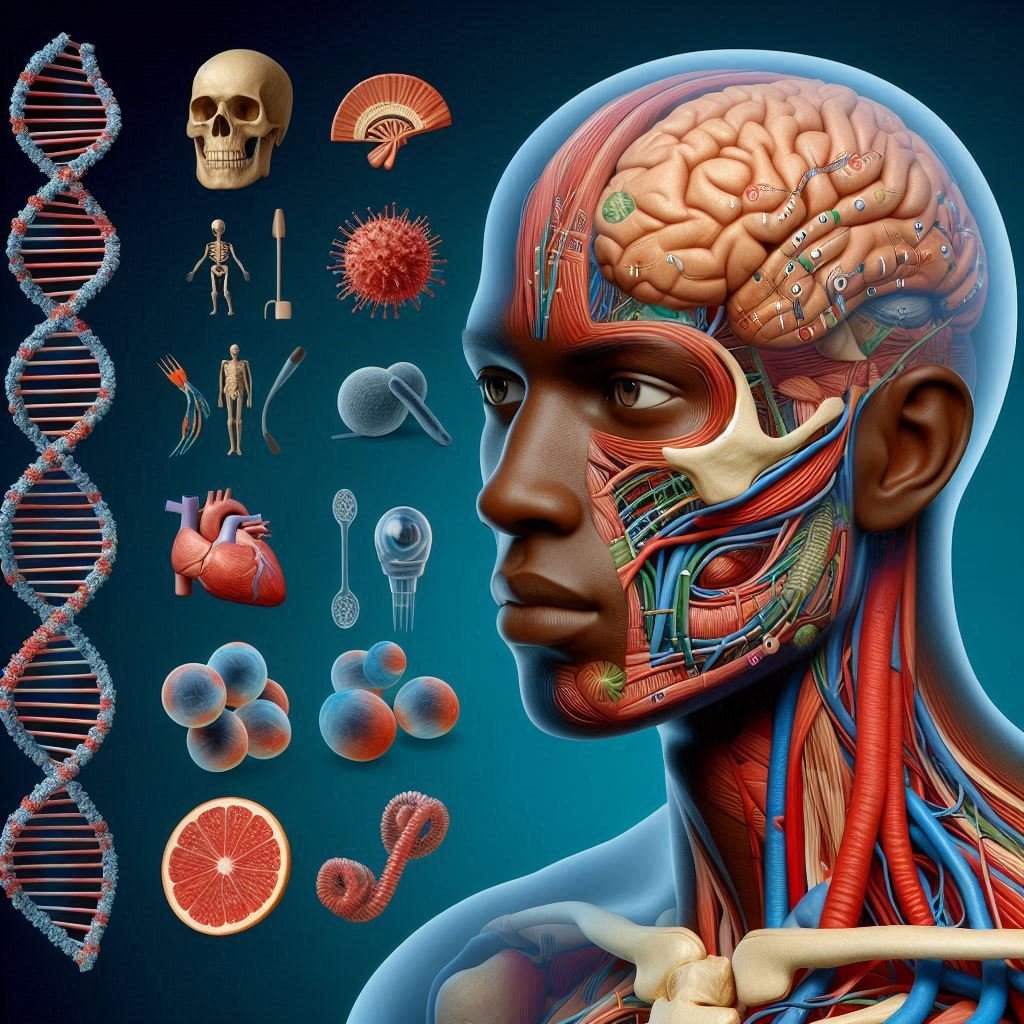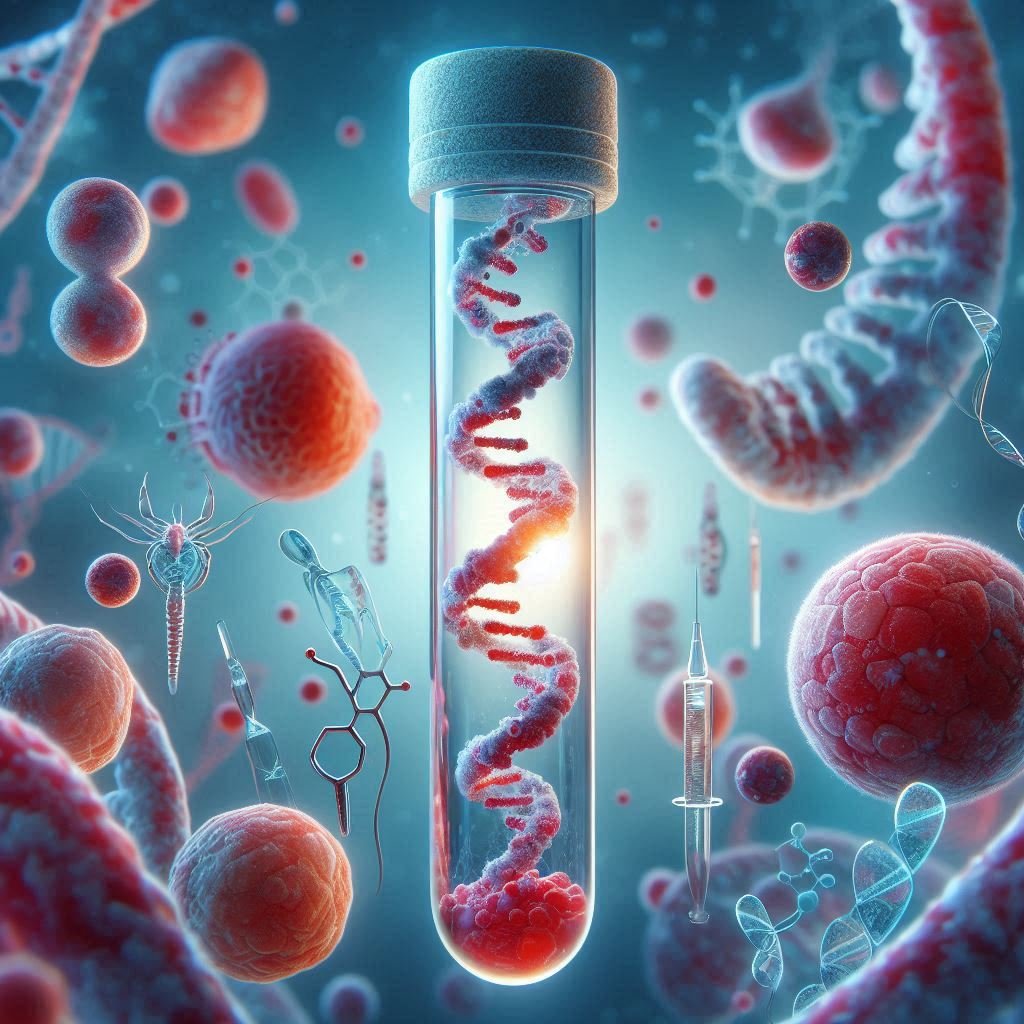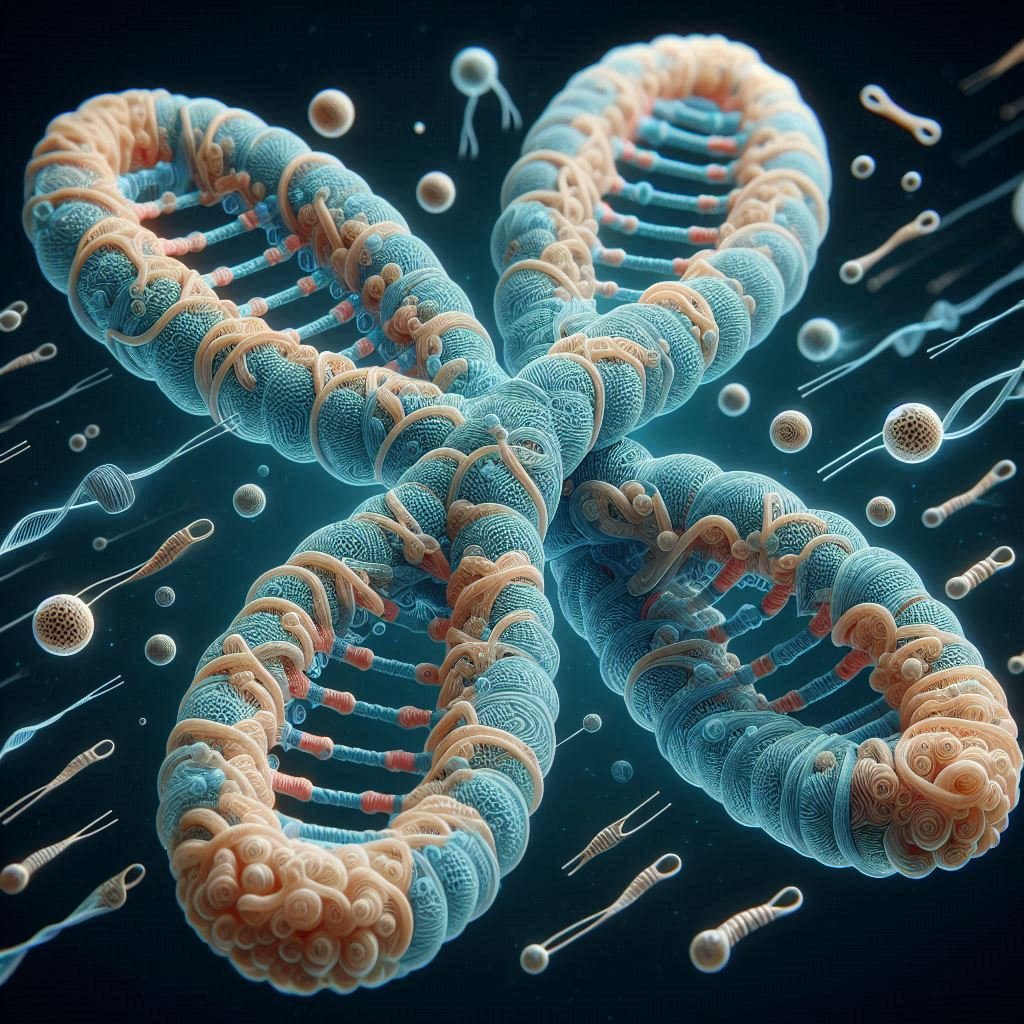Introduction

Human genome project (HGP) is a mega project. HGP was an international scientific research project with the goal of determining the sequence of nucleotide base pairs that make up human DNA and identifying and mapping all of the genes of the human genome from both a physical and functional standpoint. It was launched in 1990 and completed in 2003.
The Human genome project(HGP) was a 13-year project coordinated by the U.S. Department of Energy and the National Institute of Health. During the early years of the HGP, the Wellcome Trust (U.K.) became a major partner; additional contributions came from Japan, France, Germany, China and others.
Goals of Human genome project(HGP)
1.Sequencing the Human Genome: The main objective was to determine the complete sequence of nucleotide base pairs that make up human DNA. This involved identifying the order of the four nucleotides—adenine (A), thymine (T), cytosine (C), and guanine (G)—along the entire length of the human genome.
Identify all the approximately 20,000-25,000 genes in human DNA.
Determine the sequences of the 3 billion chemical base pairs that make up human DNA
2.Mapping Genes and Genetic Variation: Beyond sequencing, the project aimed to map the location of genes within the human genome and identify genetic variations, such as single nucleotide polymorphisms (SNPs) and structural variants. Mapping genes and variations was crucial for understanding their roles in health and disease.
3.Understanding Gene Function: Another goal was to elucidate the functions of genes and other elements of the genome. This involved identifying regulatory regions, non-coding RNAs, and other genomic elements that control gene expression and influence biological processes.

4.Advancing Biotechnology and Data Analysis: The Human genome project(HGP) sought to develop and improve technologies for DNA sequencing, genome mapping, and bioinformatics analysis. These technological advancements were essential for processing and interpreting the vast amounts of genomic data generated by the project.
5.Studying Comparative Genomics: Comparative analysis of the human genome with the genomes of other organisms, such as model organisms like mice and fruit flies, as well as other primates, provided insights into evolutionary relationships, genome structure, and the functional significance of genes.
6.Ethical, Legal, and Social Implications (ELSI): In addition to scientific goals, the Human genome project(HGP) aimed to address ethical, legal, and social issues related to genetics and genomics. This included considerations of privacy, informed consent, genetic discrimination, and equitable access to genomic information and technologies.
Note : Many non-human model organisms, such as bacteria, yeast, Caenorhabditis elegans, Drosophila (the fruit fly), plants (rice and Arabidopsis), etc., have also been sequenced.
Methodologies
The methods involved two major approaches:
First approach is focused on identifying all the genes that are expressed as RNA and it is referred to as Expressed sequence tags (ETS).
Second is a blind approach of sequencing whole set of genome that contain all coding and the non coding sequence and assigning different regions in sequence with function and referred as Sequential annotation.
Process for Human genome project(HGP)
DNA Extraction: Students may learn about the basic process of extracting DNA from cells, which involves breaking open the cells, releasing the DNA, and then purifying it for further analysis.

Polymerase Chain Reaction (PCR): PCR is a technique used to amplify specific regions of DNA. Students may learn about the principles of PCR and how it was used in the Human genome project(HGP) to amplify DNA fragments for sequencing.
DNA Sequencing: Students may learn about the basic principles of DNA sequencing, such as the Sanger sequencing method used in the early stages of the Human genome project(HGP). They may also learn about newer sequencing technologies, such as next-generation sequencing, which enabled faster and more cost-effective sequencing.
Gel Electrophoresis: Gel electrophoresis is a technique used to separate DNA fragments based on their size. Students may learn about how gel electrophoresis was used in the Human genome project(HGP) to analyze DNA fragments and verify the accuracy of sequencing results.

Bioinformatics: Students may learn about the role of computers and bioinformatics tools in analyzing genomic data. They may learn about how computational methods were used to assemble genome sequences, identify genes, and annotate genomic features in the HGP.
Model Organisms and Comparative Genomics: Students may learn about the importance of studying model organisms, such as mice and fruit flies, in genetics research. They may also learn about how comparative genomics was used in the HGP to compare the human genome with the genomes of other species to identify conserved regions and infer gene function.
Note: The commonly used hosts were bacteria and yeast, and the vectors were called as BAC (bacterial artificial chromosomes), and YAC (yeast artificial chromosomes).
Role of bioinformatics in HGP
Bioinformatics played a crucial role in the Human Genome Project (HGP) by providing computational tools and methods for organizing, analyzing, and interpreting the vast amounts of genomic data generated by the project. Here are some key roles of bioinformatics in the HGP:

Genome Assembly: Bioinformatics tools were used to assemble the millions of short DNA sequences generated by sequencing machines into longer contiguous sequences, known as contigs. This process involved aligning overlapping sequences to reconstruct the complete genome sequence.
Gene Prediction: Bioinformatics algorithms were employed to identify genes within the assembled genome sequences. These algorithms searched for sequences that resembled known gene features, such as coding regions (exons) and regulatory elements, to predict the locations of genes.
Functional Annotation: Bioinformatics tools were used to annotate the functions of genes and other genomic elements identified in the genome sequences. This involved comparing DNA and protein sequences against databases of known genes and biological pathways to infer their functions.
Comparative Genomics: Bioinformatics facilitated the comparison of the human genome with the genomes of other species, such as model organisms like mice and fruit flies. Comparative genomics allowed researchers to identify evolutionarily conserved regions, infer gene function, and study the genetic basis of traits and diseases.
Variant Analysis: Bioinformatics tools were used to analyze genetic variations, such as single nucleotide polymorphisms (SNPs) and structural variants, within the human genome. These tools helped researchers identify genetic differences between individuals and populations and investigate their associations with phenotypic traits and diseases.
Data Management and Integration: Bioinformatics played a key role in managing and integrating the diverse types of genomic data generated by the HGP, including DNA sequences, gene annotations, and experimental data. Bioinformatics databases and platforms provided centralized repositories for storing, sharing, and accessing genomic information.
Salient features of human genome

(i) The human genome have 3164.7 million bp.
(ii) The average gene consists of 3000 bases, but sizes vary, with the largest known human gene being dystrophin at 2.4 million bases.
(iii) The total number of genes is estimated at 30,000–much lower than previous estimates of 80,000 to 1,40,000 genes. Almost all (99.9 %) nucleotide bases are exactly the same in all people.
(iv) The functions are unknown for over 50 per cent of the discovered genes.
(v) Less than 2 % of the genome codes for proteins.
(vi) Repeated sequences makes very large portion of the human genome.
(vii) Repetitive sequences are stretches of DNA sequences that are repeated many times, sometimes hundred to thousand times. They are thought to have no direct coding functions, but they shed light on chromosome structure, dynamics and evolution.
(viii) Chromosome 1 has highest genes (2968), and the Y has the fewest (231).
(ix) Scientists identified about 1.4 million locations where single base DNA differences (SNPs – single nucleotide polymorphism, pronounced as ‘snips’) occur in humans. This information helps in the processes of finding chromosomal locations for disease-associated sequences and tracing human history.
Applications of HGP
Medical Research and Healthcare: The HGP has revolutionized our understanding of genetics and its role in human health. It has led to the identification of genes associated with various diseases, including cancer, cardiovascular diseases, and genetic disorders. This knowledge has facilitated the development of personalized medicine, where treatments are tailored to an individual’s genetic makeup.
Diagnostic Tools: Genetic testing and screening have become increasingly common as a result of the HGP. These tests can identify individuals at risk for certain diseases, allowing for early intervention and prevention strategies. For example, prenatal genetic testing can detect chromosomal abnormalities in fetuses, while predictive genetic testing can assess an individual’s risk of developing certain conditions later in life.

Pharmacogenomics: Understanding the genetic basis of drug response has important implications for drug development and prescription. Pharmacogenomic research aims to identify genetic factors that influence how individuals respond to medications, allowing for the development of more effective and personalized treatments with fewer side effects.
Forensic Science: The HGP has also had applications in forensic science, where DNA analysis is used to identify individuals and establish relationships between individuals in criminal investigations and paternity cases. DNA databases have become important tools for law enforcement agencies around the world.
Agriculture and Livestock Breeding: The HGP has provided insights into the genetic makeup of plants and animals, leading to advances in agriculture and livestock breeding. This knowledge has been used to develop crops with improved yields, nutritional content, and resistance to pests and diseases, as well as to breed animals with desirable traits such as increased milk production or disease resistance.
Evolutionary Studies: By comparing the human genome with the genomes of other species, researchers can gain insights into human evolution and the genetic basis of traits that distinguish us from other organisms. This comparative genomics approach has shed light on the origins of species and the genetic changes that have occurred over time.

FAQ (frequently asked questions)
1. What is the Human Genome Project (HGP)?
Ans. The Human Genome Project was an international scientific research project with the goal of mapping and sequencing the entire human genome, determining the sequence of nucleotide base pairs that make up human DNA.
2. When did the HGP begin and end?
Ans. The project was officially launched in 1990 and completed in 2003.
3. What was the primary goal of the HGP?
Ans. The main objective was to provide a complete and accurate sequence of the 3 billion DNA base pairs that make up the human genome, as well as to identify and map all of the approximately 20,000-25,000 genes in the genome.
4. Why was the HGP important?
Ans. The HGP provided a foundation for understanding the genetic basis of human biology and disease. It has led to numerous breakthroughs in medicine, genetics, and related fields.
5. Who were the key organizations involved in the HGP?
Ans. The project was a collaborative effort involving multiple government agencies, research institutions, and universities from around the world. Key organizations included the National Institutes of Health (NIH) and the Department of Energy (DOE) in the United States, as well as international partners such as the Wellcome Trust in the UK.
6. How was the human genome sequenced?
Ans. The sequencing process involved breaking the genome into smaller, more manageable fragments, sequencing each fragment, and then assembling the sequences into a complete genome sequence. Various sequencing technologies and methods were employed throughout the project, with significant advancements made over time.
7. What are some of the key discoveries and applications resulting from the HGP?
Ans. The HGP has led to the identification of thousands of genes associated with human diseases, insights into human evolution, advancements in personalized medicine and genetic testing, improvements in forensic science, and applications in agriculture and biotechnology.
8. What are some ongoing efforts related to the human genome?
Ans. While the original HGP is complete, ongoing research continues to refine the human genome sequence, explore its functional elements, and investigate its role in health and disease. Projects such as the ENCODE (Encyclopedia of DNA Elements) and the 1000 Genomes Project are examples of continuing efforts in this area.
9. How has the HGP impacted society?
Ans. The HGP has had far-reaching implications for healthcare, biomedical research, agriculture, forensic science, and our understanding of human biology and evolution. It has paved the way for personalized medicine, genetic testing, and other applications that benefit individuals and society as a whole.
10. Where can I learn more about the Human Genome Project?
Ans. There are many resources available online, including official project websites, scientific publications, and educational materials provided by research institutions and government agencies involved in the project.
Conclusion
The Human Genome Project stands as a testament to human curiosity, collaboration, and ingenuity. From the humble beginnings of a visionary idea to the unveiling of the blueprint of humanity, this monumental undertaking has reshaped our understanding of genetics and redefined the boundaries of possibility in science and medicine. As we navigate the genomic landscape, armed with unprecedented insights and capabilities, let us tread thoughtfully and responsibly, mindful of the profound implications of decoding the essence of life itself.
Table of Contents
Read more about Human genome project (HGP)
turner syndrome- symptoms, causes, treatment
Go and visit dusearchit.in and get more knowledge about others topics.
